Lisa Gill
Generalization in birdsong classification: impact of transfer learning methods and dataset characteristics
Sep 21, 2024
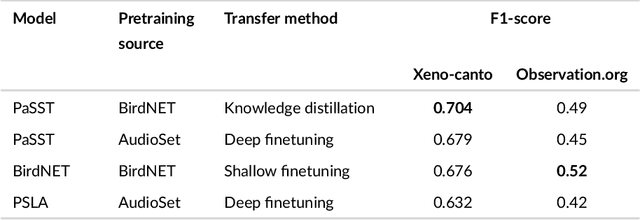


Abstract:Animal sounds can be recognised automatically by machine learning, and this has an important role to play in biodiversity monitoring. Yet despite increasingly impressive capabilities, bioacoustic species classifiers still exhibit imbalanced performance across species and habitats, especially in complex soundscapes. In this study, we explore the effectiveness of transfer learning in large-scale bird sound classification across various conditions, including single- and multi-label scenarios, and across different model architectures such as CNNs and Transformers. Our experiments demonstrate that both fine-tuning and knowledge distillation yield strong performance, with cross-distillation proving particularly effective in improving in-domain performance on Xeno-canto data. However, when generalizing to soundscapes, shallow fine-tuning exhibits superior performance compared to knowledge distillation, highlighting its robustness and constrained nature. Our study further investigates how to use multi-species labels, in cases where these are present but incomplete. We advocate for more comprehensive labeling practices within the animal sound community, including annotating background species and providing temporal details, to enhance the training of robust bird sound classifiers. These findings provide insights into the optimal reuse of pretrained models for advancing automatic bioacoustic recognition.
Few-shot bioacoustic event detection at the DCASE 2023 challenge
Jun 15, 2023



Abstract:Few-shot bioacoustic event detection consists in detecting sound events of specified types, in varying soundscapes, while having access to only a few examples of the class of interest. This task ran as part of the DCASE challenge for the third time this year with an evaluation set expanded to include new animal species, and a new rule: ensemble models were no longer allowed. The 2023 few shot task received submissions from 6 different teams with F-scores reaching as high as 63% on the evaluation set. Here we describe the task, focusing on describing the elements that differed from previous years. We also take a look back at past editions to describe how the task has evolved. Not only have the F-score results steadily improved (40% to 60% to 63%), but the type of systems proposed have also become more complex. Sound event detection systems are no longer simple variations of the baselines provided: multiple few-shot learning methodologies are still strong contenders for the task.
Learning to detect an animal sound from five examples
May 22, 2023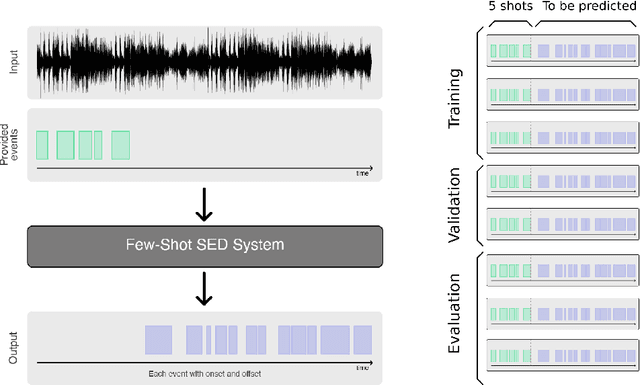
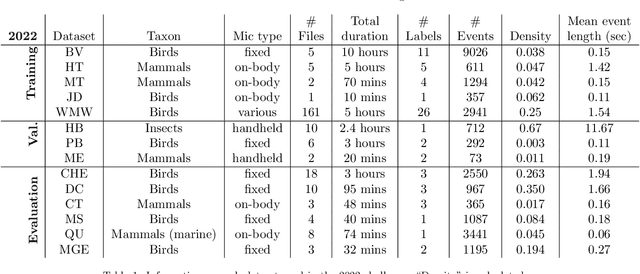
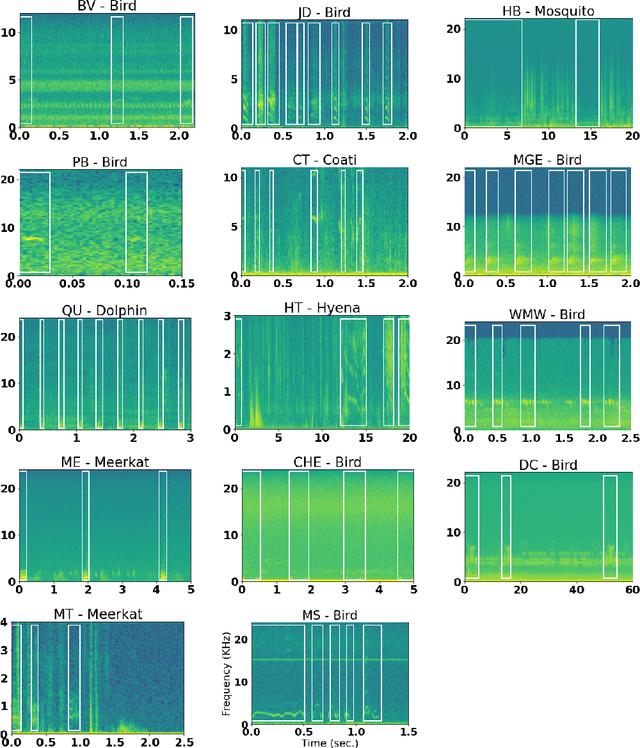
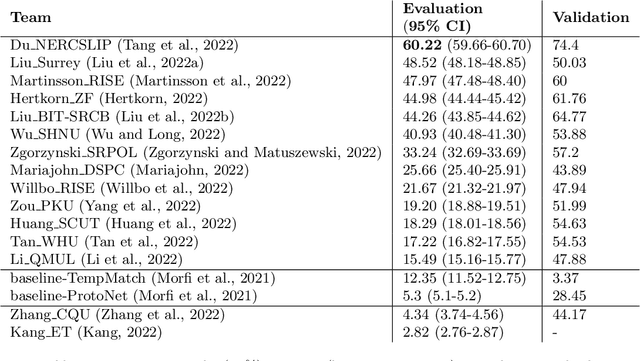
Abstract:Automatic detection and classification of animal sounds has many applications in biodiversity monitoring and animal behaviour. In the past twenty years, the volume of digitised wildlife sound available has massively increased, and automatic classification through deep learning now shows strong results. However, bioacoustics is not a single task but a vast range of small-scale tasks (such as individual ID, call type, emotional indication) with wide variety in data characteristics, and most bioacoustic tasks do not come with strongly-labelled training data. The standard paradigm of supervised learning, focussed on a single large-scale dataset and/or a generic pre-trained algorithm, is insufficient. In this work we recast bioacoustic sound event detection within the AI framework of few-shot learning. We adapt this framework to sound event detection, such that a system can be given the annotated start/end times of as few as 5 events, and can then detect events in long-duration audio -- even when the sound category was not known at the time of algorithm training. We introduce a collection of open datasets designed to strongly test a system's ability to perform few-shot sound event detections, and we present the results of a public contest to address the task. We show that prototypical networks are a strong-performing method, when enhanced with adaptations for general characteristics of animal sounds. We demonstrate that widely-varying sound event durations are an important factor in performance, as well as non-stationarity, i.e. gradual changes in conditions throughout the duration of a recording. For fine-grained bioacoustic recognition tasks without massive annotated training data, our results demonstrate that few-shot sound event detection is a powerful new method, strongly outperforming traditional signal-processing detection methods in the fully automated scenario.
 Add to Chrome
Add to Chrome Add to Firefox
Add to Firefox Add to Edge
Add to Edge